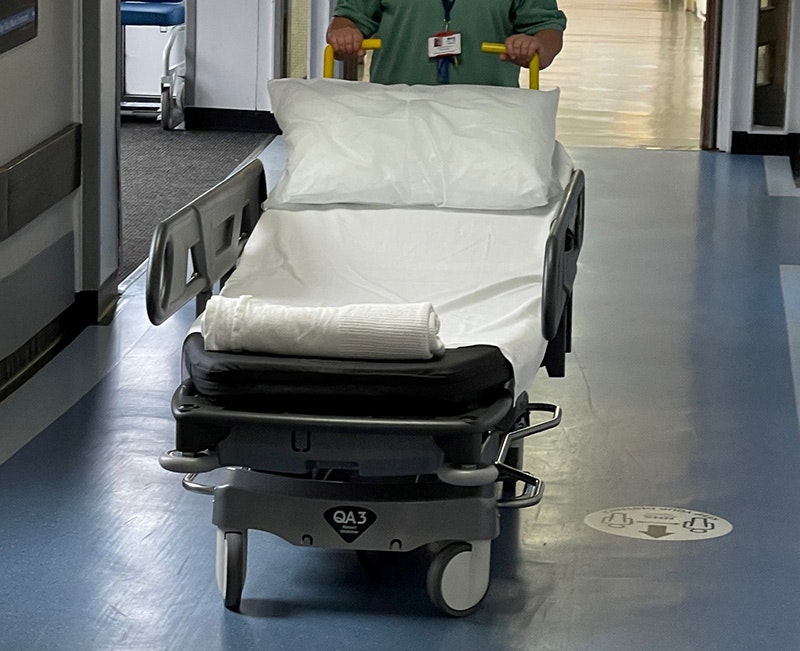Background
Raigmore Hospital in Inverness is part of NHS Highland and is the only acute district hospital serving patients in the Highlands.

Based on the Old Perth Road site since 1941, its first ‘rebuild’ to replace wartime pre-fabs was in the 1960s, with the main tower block, where most wards and theatres are housed, being added in the 1980s. A new emergency department was constructed in 2004, and in 2007, the Wyvis Suite was built, containing a pre-op assessment unit and the cardiac ultrasound service.
Because of the way the site has evolved, moving patients around can be quite challenging, as buildings are often linked by long corridors, some of which have significant gradients.
With staff health and wellbeing always a priority, the hospital has been eager to take advantage of new equipment and technologies – which is why it was keen to investigate the concept of powered patient trolleys.

Approach
Senior Charge Practitioner in Anaesthetics & Recovery Angus Riach was already aware of the powered positioning offered by Anetic Aid’s QA4 Mobile Surgery System, but it was only when he saw a brochure that he learned that the company was also offering a patient transport stretcher – the QA3 DRIVE – with a powered drive facility.
He was immediately interested in the concept, because while there had never been any serious injuries caused by moving current trolleys, he felt this could reduce potential risks in the future.
Explained Angus: ‘Moving and handling is something we are very aware of – and conduct regular risk assessments. There is no doubt that these days we see more bariatric patients – and average patient weights have also increased.
‘The idea of a trolley that had its own internal drive, particularly for travelling uphill, was something we wanted to explore. After all, we were already using electronic tugs for trolleys to move sterile instruments around, so why not something powered for patients?’
When he made enquiries, he found there was already a model of the QA3 DRIVE Patient Stretcher on site being evaluated by another department, so he was able to ask for the trial to be extended to cover theatres, taking in journeys to and from the maternity unit and children’s ward.
Staff involved in the trials were all very much in favour of the new stretcher – but of course that was never going to be the only consideration when requesting new equipment.
‘Another factor was the age of our existing trolleys,’ said Angus. ‘These were early models of the QA3, and while we knew they were robust and good quality – everything has a natural ‘life’. It was inevitable that after nearly 20 years of wear, they would start to need more maintenance and repair (with associated costs) – and eventually, replacement.
‘Budgets always have to be justified, but we were very aware that if any injury were to happen, particularly if it was going to lead to lengthy sick leave, it would have major knock-on effects for staffing. This was our opportunity to build those extra elements of risk prevention and staff welfare into our capital replacement programme.’
Outcome
Following the trials, the hospital decided to purchase 21 QA3 DRIVE Stretchers: it was important to have enough of the same model so that there didn’t need to be any scheduling concerns about having the right trolley available at any particular time – all have the DRIVE specification.
Staff using them have found they require far less effort to move patients around – particularly for paediatrics where parents may be on the stretcher along with their children on the journey between theatres and the ward. The weight capacity of 320kg has been a particular benefit – along with the easy-to-clean / infection control properties of the stretcher and mattress.
With previous models, staff had been using side rails in a lateral position as an extra working surface. This wasn’t possible with the DRIVE model, but Anetic Aid suggested using an arm table attachment as an alternative, which staff say is actually a better option because it provides more usable surface area.


